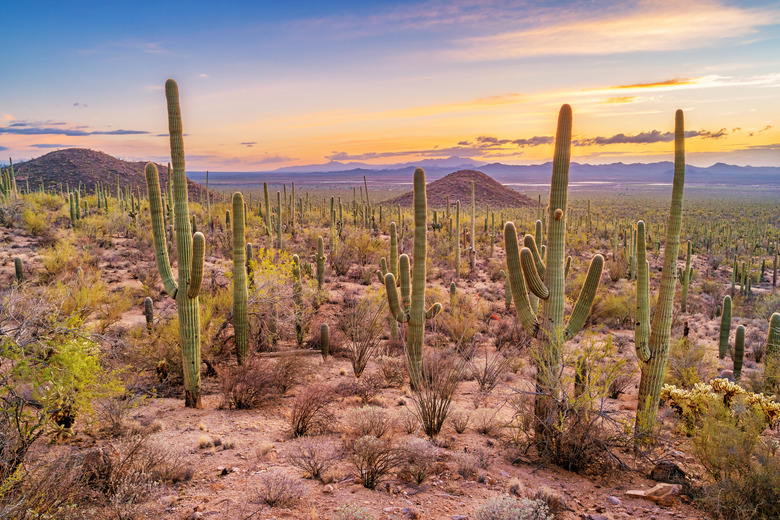What Is Cactus Wood?
We may receive a commission on purchases made from links.
Cacti (Cactaceae plant family) and many similar desert-dwelling succulents have a short checklist of easily recognizable features: a leathery skin, protective spines or needles on the outside to fend off herbivores, and a fleshy interior that hoards moisture. One part of cactus anatomy that's less known, perhaps because it's covered by the familiar exterior, is that the core of many cacti is actually made of hard, durable wood.
Tip
Cactus wood, as the name suggests, grows as the tough wooden core of various cacti.
Where Cactus Wood Comes From
Where Cactus Wood Comes From
Various types of cactus plants produce wood, though unlike common wood producers like pine, maple and oak trees, the wood of cactus is hidden behind the plants' layers of skin, spine and juicy flesh. Underneath this skin, large cactus species possess sturdy wood bodies much like those of small trees.
This core of wood has two purposes. Like the rest of the cactus' body, it plays an important role in storing water to ensure the plant's long-term survival. More importantly, though, it provides structural strength to many tall and slender cacti. You could think of it as the cactus' skeleton, providing the rigidity to support the flesh and keep it upright.
Biology of Cactus Wood
Biology of Cactus Wood
Cacti exhibit specific tendencies through their wood. Many cactus species exhibit polymorphic wood growth. This means the plants grow different types of wood at different stages in their development. All large cactus species possess wood with especially high fiber content, which makes the wood extremely strong.
Cactus plants evolve such that successive generations of plants store larger amounts of water in their wood than did their parents. Storing water in the wood with the use of specialized vessels increases the overall storage capacity of a plant and allows it to withstand longer periods of drought that it could without storing water in such a way.
Uses for Cactus Wood
Uses for Cactus Wood
Furniture makers in regions like the American Southwest use cactus wood as a construction material, particularly the wood from the saguaro (Carnegiea gigantea, USDA zones 9-10) and cholla species (Cylindropuntia imbricata, zones 6-11). Crafters fashion chairs, tables, clocks, lamps, boxes, decorative carvings and more from this durable wood. Cholla wood's distinctive "braided" appearance and rot resistance even make it a popular decorative element for aquariums.
Generally, cactus wood is collected dead from the desert floor. This is partly to minimize the danger and tremendous work effort required of culling wood from a living cactus, and partly a reflection of the slow growth of cacti and the conservation status of many species.
Interesting Facts About Cactus Wood
Interesting Facts About Cactus Wood
There's a direct correlation between the types of fiber and size of water conduction and storage vessels found in cactus wood and the growth habit of cactus species. The larger the cactus, the longer and wider the water vessels and fibers. This means that the largest cactus plants possess the strongest wood and the capacity to store the most amount of water, an obvious evolutionary trait that helps large cacti survive in harsh conditions.
The high demand for cactus wood among contractors and artisans in the Southwest, combined with the slow growth habits and conservation status of many cacti, has created a black market in cactus wood smuggling from Mexico to the United States. While plenty of cactus wood enters the country legally, a good deal more comes in illicitly. If you're interested in buying items made of cactus wood, you should make an effort to deal with reputable suppliers and, where possible, verify the wood's provenance.
